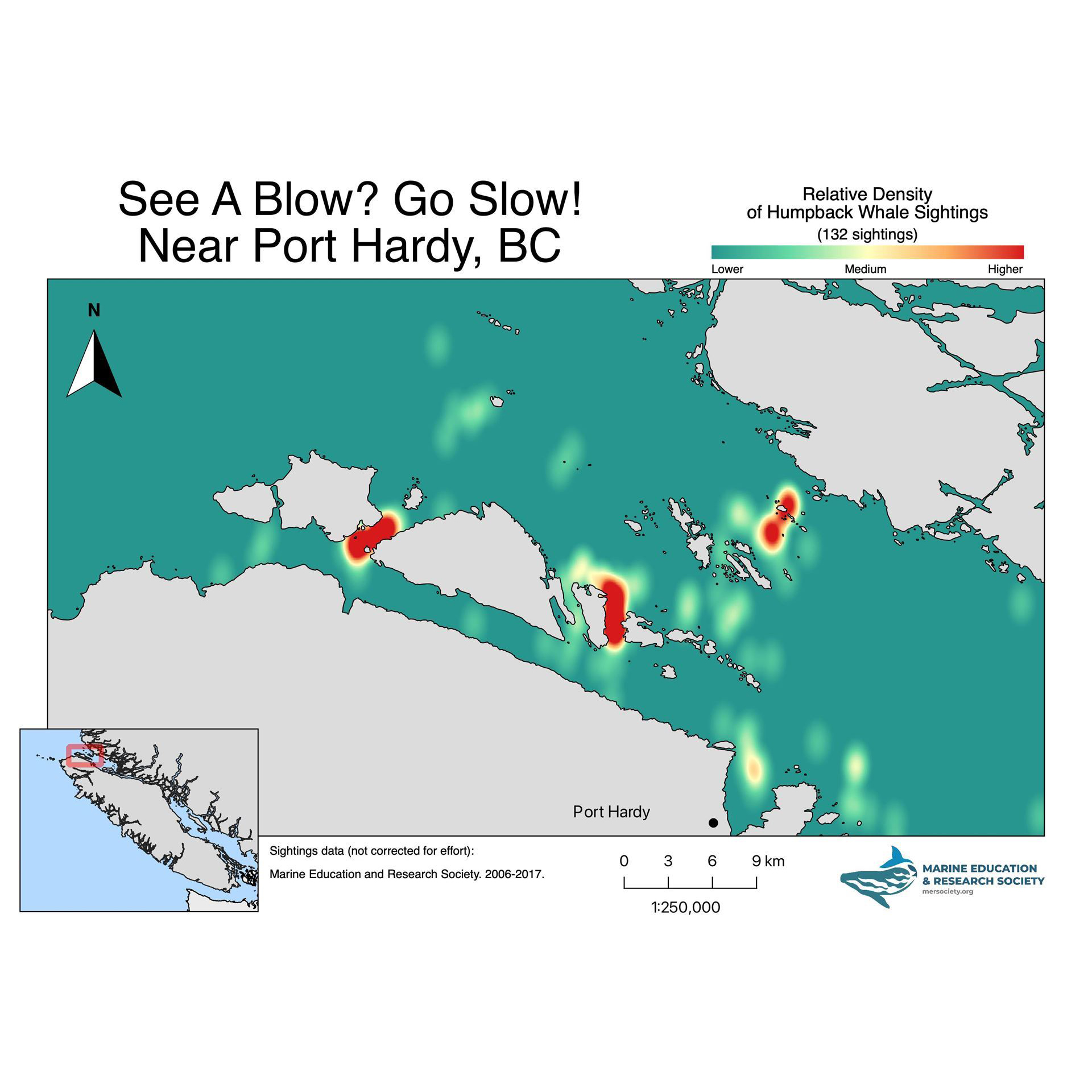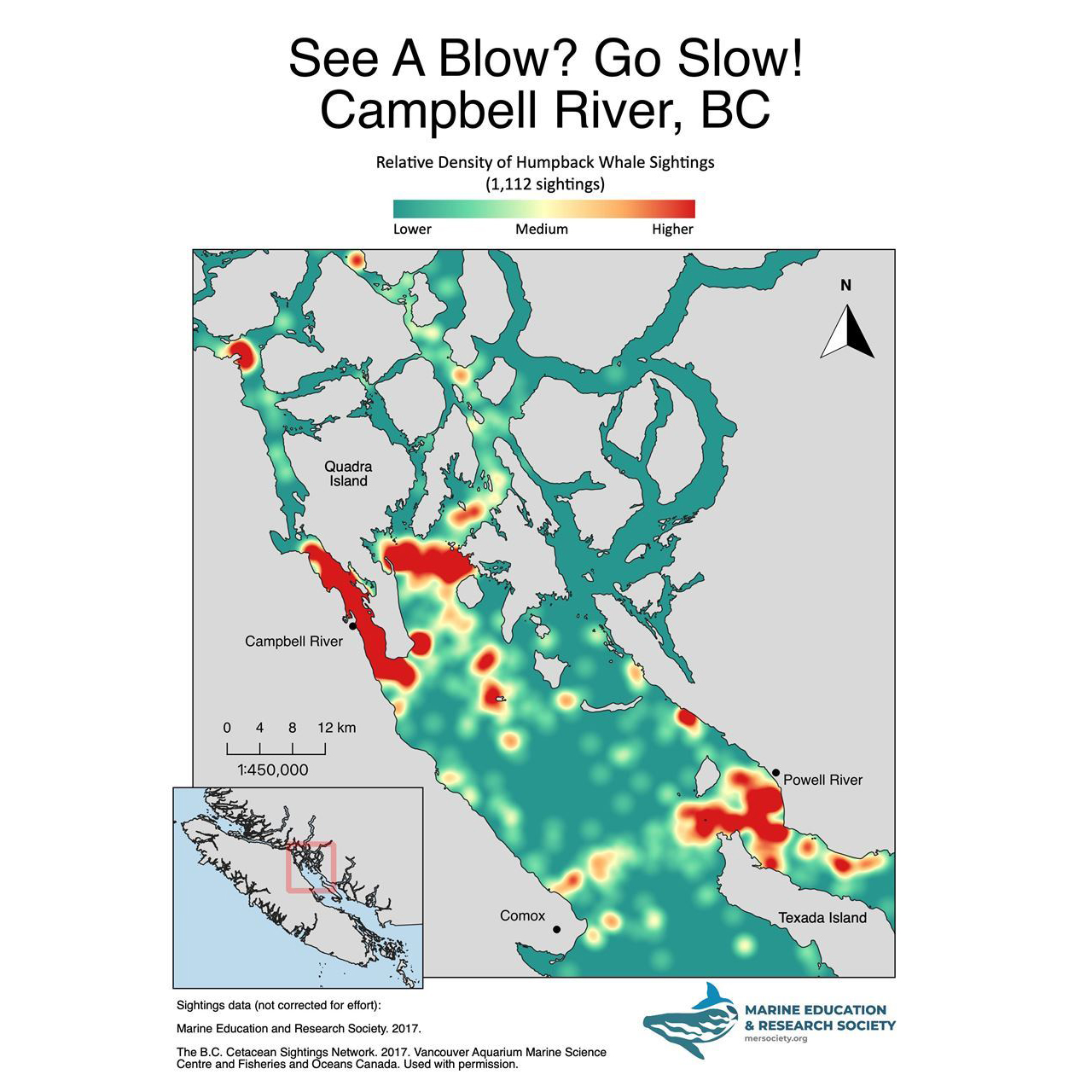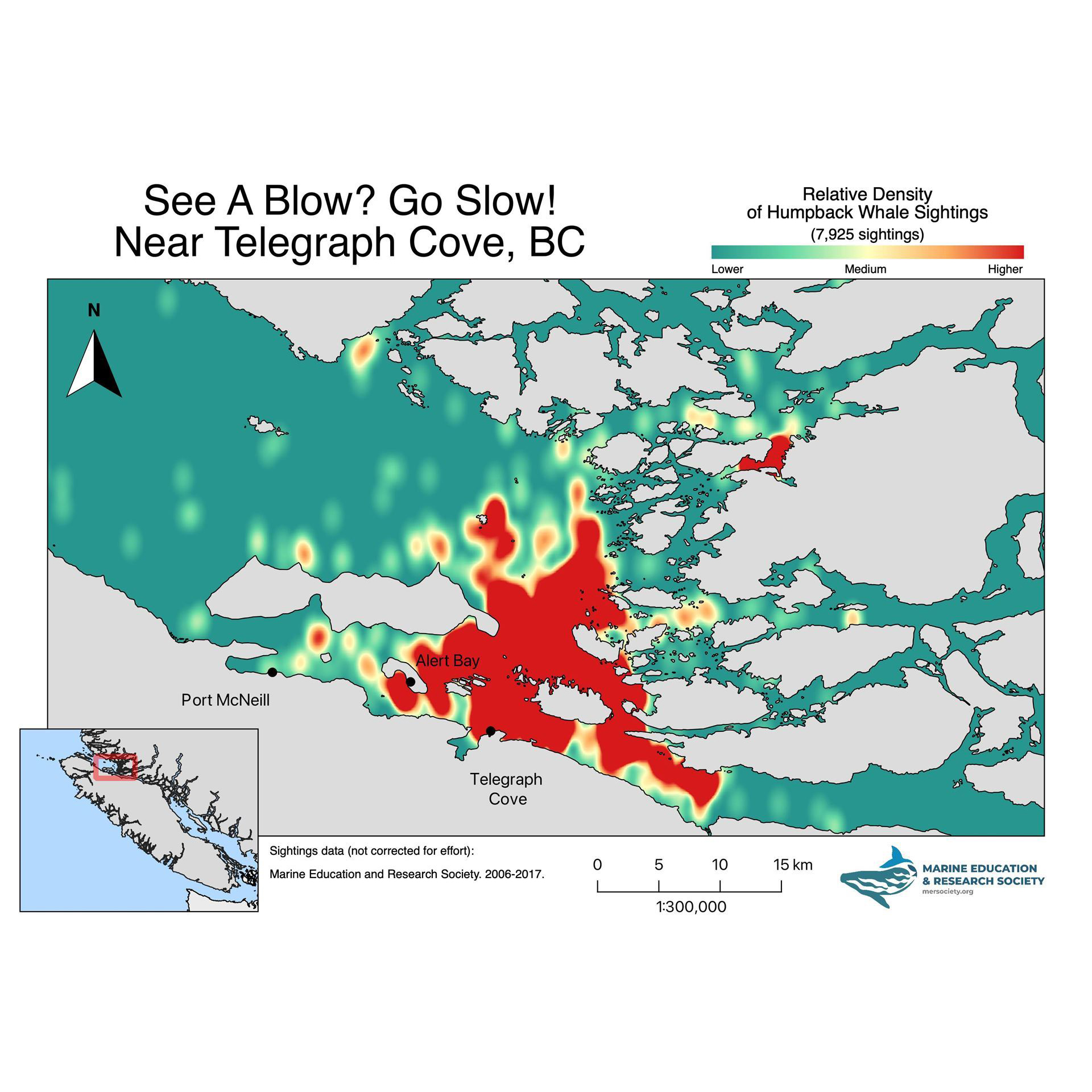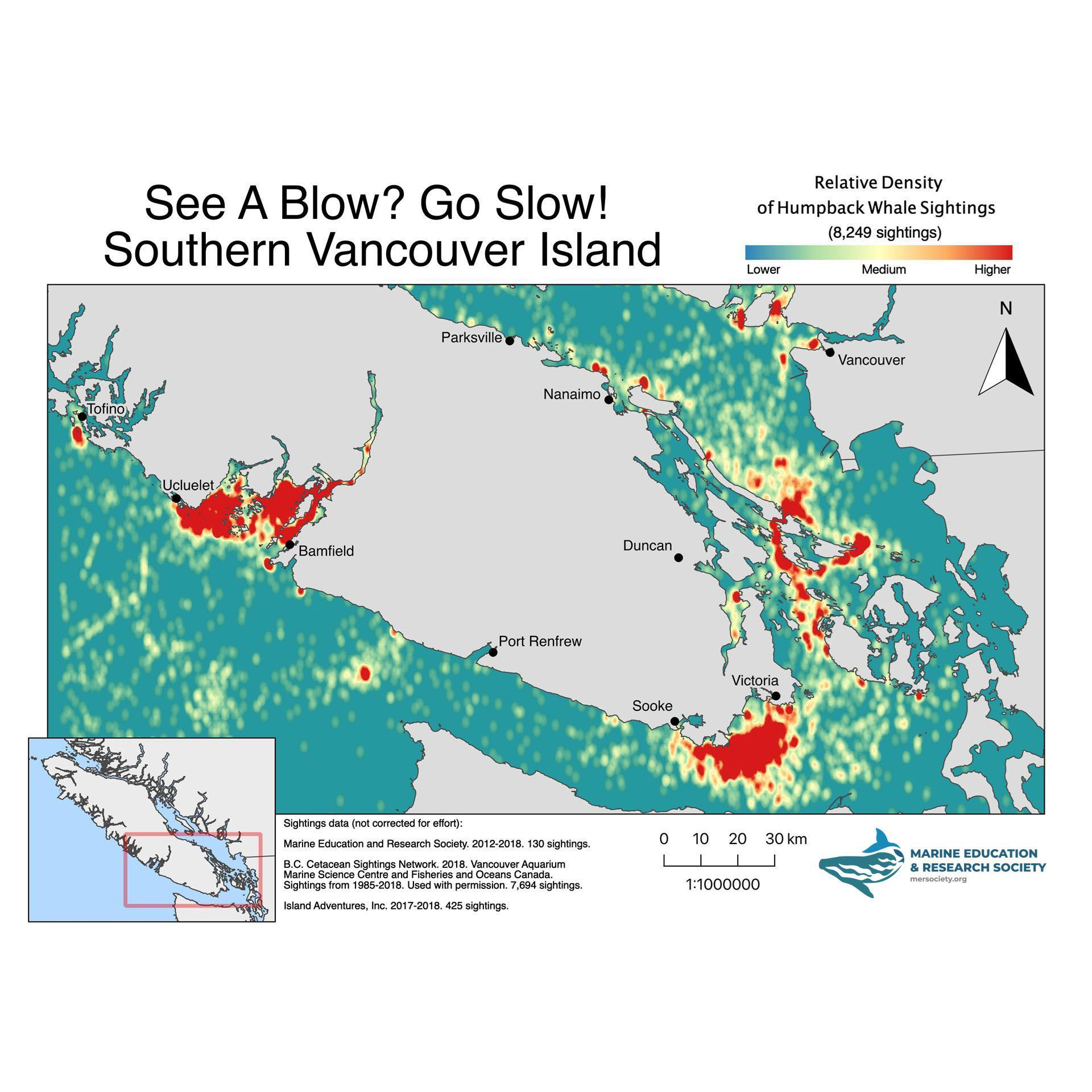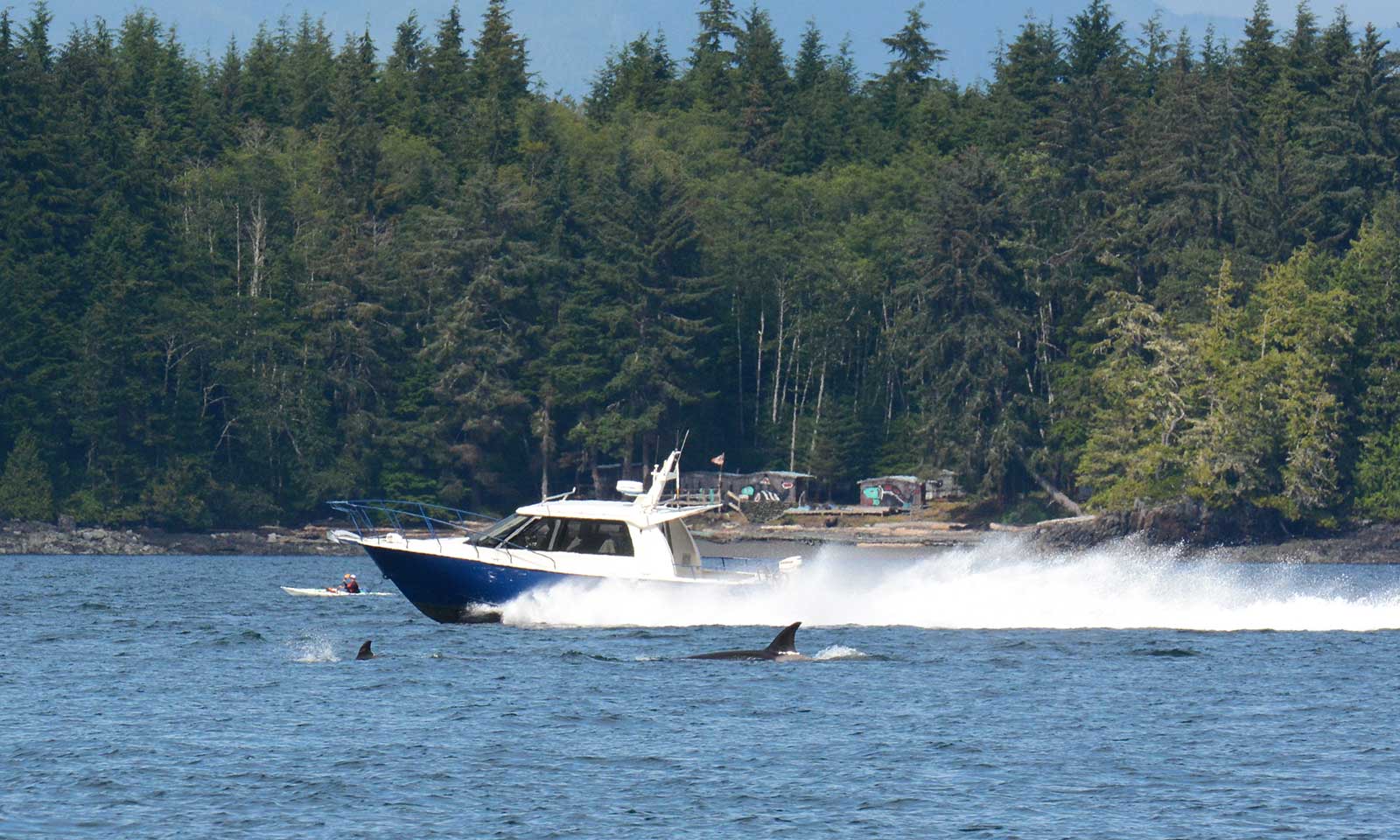
Much too close and high speed near Bigg’s Killer Whales
Laws & Boater Safety
DFO Incident Reporting Line: 1-800-465-4336
For the safety of boaters & marine mammals
Thank you for your interest in responsible and safe boating around marine wildlife. We need your help.
Many marine mammals off BC’s coast are at risk. Laws exist to reduce disturbance and threats such as vessel strike and entanglement.
There have also been very significant human injuries as a result of collisions with whales and whale entanglement. It is essential that boaters know that large baleen whales like Humpbacks can be oblivious of boats and fishing gear. They often travel in unpredictable patterns, surface after long dives, and can be resting or nursing just below the surface.
By understanding the intent of the laws and the human safety risks, it is hoped that boaters will help educate others, model best practices, and know what to do when marine mammals are in distress.
See here for our free, online Whale-Safe Boating Course.
See here for guidelines for responsible whale watching.
See a Blow? Go Slow!
Whale-Safe Boating Course
The Whale-Safe Boating course is NOW available! Whether you paddle, sail, or motor in coastal British Columbia, this course is for YOU. This free, online course is a comprehensive, one-stop resource that fulfills a critical need by addressing the safety of BOTH marine mammals and boaters. It helps recreational boaters stay safe and legal around marine mammals —while also enhancing their enjoyment of our spectacular coast and contributions to marine mammal conservation. This course is supported by Transport Canada's Boater Safety Contribution Program.
Register Here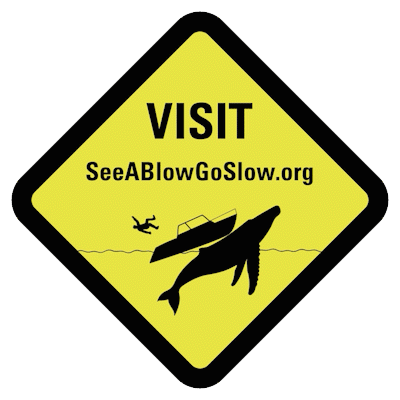
Entangled Whales
Large baleen whales like Humpbacks are at particular risk of entanglement. They do not have biosonar like toothed whales. Help educate others about the severity of the threat; how helpful it is to be alert for entangled whales; and to know what to do if one is seen. There is much misinformation that risks human and whale safety. Please click RESCUE for our resource “How to Save a Whale”.
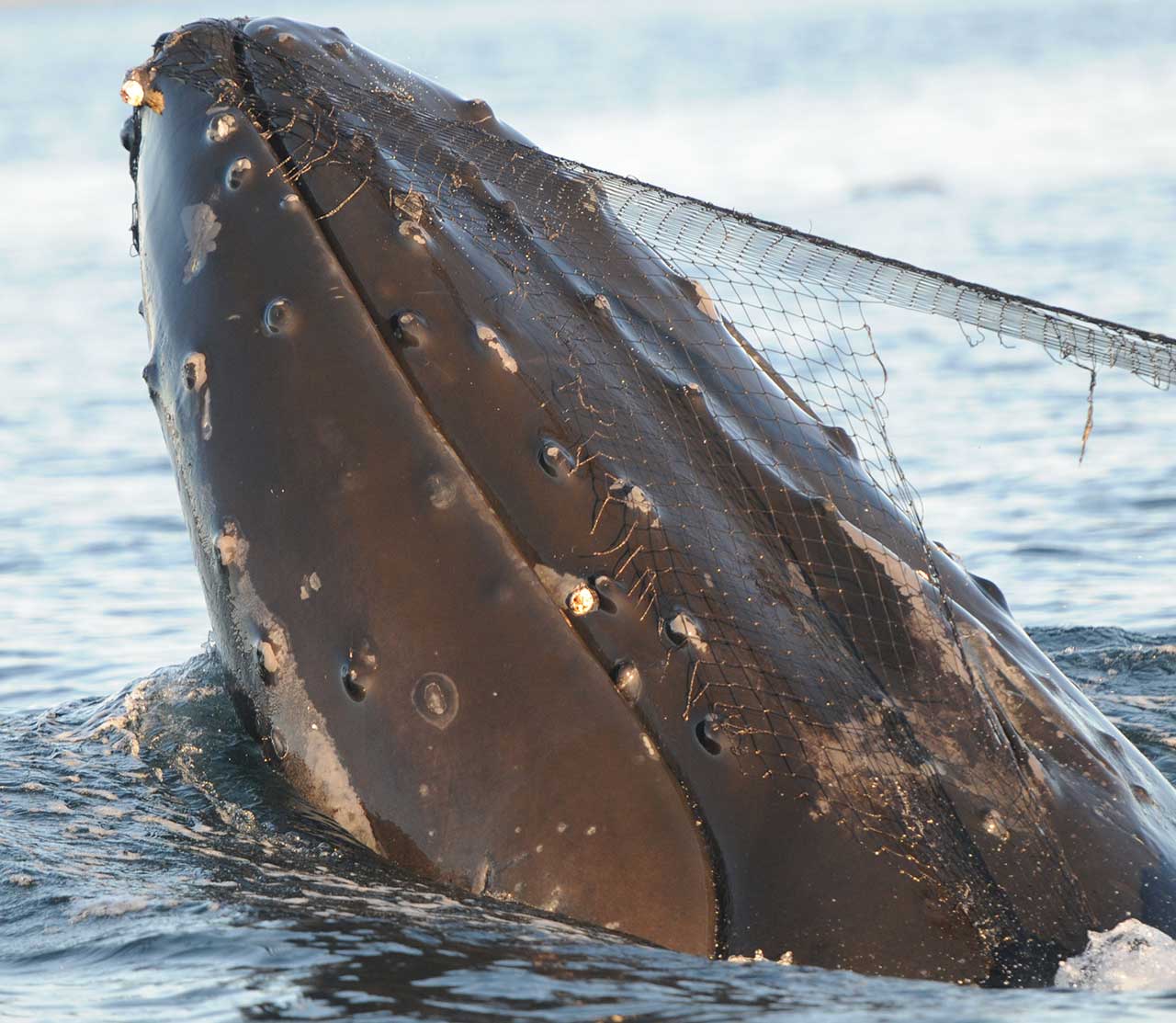
Cutter (BCX1438) was freed from net ©MERS, MML-42
-
Marine Mammal Laws & Regulations
It is the responsibility of boaters to know the laws protecting marine mammals. Canada’s Marine Mammal Regulations address acoustic and physical disturbance and were significantly updated in 2018. There are additional Management measures to protect endangered Southern Resident Killer Whales. Any marine species recognized as being at risk, is further protected under Canada’s Species at Risk Act.
-
Click here for the full Regulations. They include:
No person shall approach a marine mammal to, or to attempt to:
(a) feed it;
(b) swim with it or interact with it;
(c) move it or entice or cause it to move from the immediate vicinity in which it is found;
(d) separate it from members of its group or go between it and a calf;
(e) trap it or its group between a vessel and the shore or between a vessel and one or more other vessels; or
(f) tag or mark it.Minimum avoidance distances for vessels:
- 200 m for all Killer Whales in Pacific waters (400 metres in some areas off the coast of BC – see the Management Measures to Protect Southern Resident Killer Whales).
- 200 m for whale, dolphin and porpoise species with calves or in resting position.
- 100 m for all other whales, dolphins and porpoises.
Mandatory reporting of any accidental contact between a marine mammal and a vehicle or fishing gear to the Fisheries and Oceans Incident Reporting Line, 1-800-465-4336 / DFO.ORR-ONS.MPO@dfo-mpo.gc.ca. If outside of cell range, report to VHF 16.
Drones and other aircraft, unless authorized under permit for scientific research and/or marine mammal rescue efforts, must not approach marine mammals at an altitude below 1,000 feet (304 metres) within a half nautical mile (926 metres). Flight maneuvers, including taking off, landing or altering course or altitude, are also not allowed near marine mammals. Drone operators must know the laws as laid out by Transport Canada which include that it is illegal to fly a drone above 400 feet (122 metres). This law, considered with the Marine Mammal Regulations, effectively make it illegal to fly a drone at any height near marine mammals. -
The Management Measures to Protect Southern Resident Killer Whales were last updated in May 2024. These Measures involve sanctuary zones, speed restriction zones, fishery closures and increased distances from Killer Whales. There is a mandatory 400-metre avoidance distance from Killer Whales for vessels between Campbell River and just north of Ucluelet.
Click here for the full 2024 Management Measures including maps of sanctuary zones, fishing closures, and slow down zones.
-
Key points to avoid collision
Marine mammals can suddenly surface and be difficult to avoid, especially if vessels are traveling fast. Baleen whales like Humpbacks are at increased risk of collision. Consequences include severe human injury. To increase safety:
- When you suspect there are whales:
- Give them space – we advise at least 400 m
- Slow to at least 7 knots when within 1000 m
- Stay clear of their path
- If kayaking, raft up
- Always be alert for blows and other indicators of whale presence such as aggregations of birds and vessels flying the Whale Warning Flag
- Don’t go near bait balls of fish as indicated by aggregations of birds
- Use the Whale Report Alert System app to alert large, commercial vessels of whale presence
- If despite this vigilance, a whale surfaces nearby, put engine in neutral till the whale is beyond 400 m, then proceed slowly
-
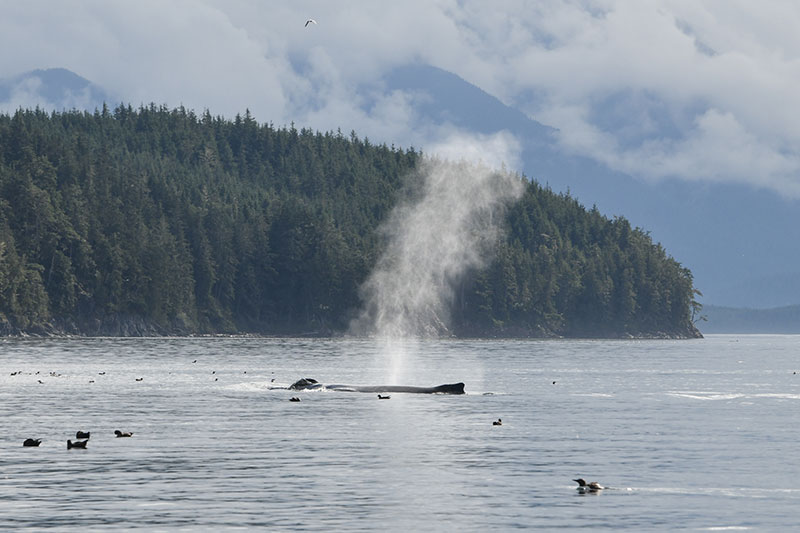
Ripple (BCX1063) ©Jackie Hildering
-
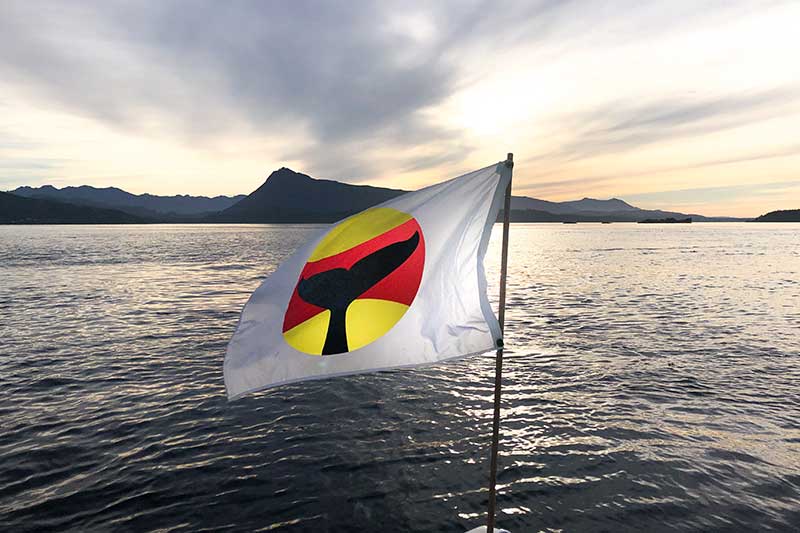
Whale Warning Flag
Humpback Density Areas
Know that whales could suddenly surface anywhere, year-round in the marine waters of British Columbia. This is why the Key Points to Avoid Collision should always be followed. The maps here show areas for which we have a lot of Humpback Whale data and know increased vigilance is needed to avoid collision. This does NOT mean there are no whales in other areas. Rather, it means there is less information. Your contribution of whale sightings can help fill knowledge gaps.
Know your flags
There are 3 flags related to boat operation and marine mammals – Research Flag, AV Flag, and Whale Warning Flag.
The Whale Warning Flag can be used by YOU to help whales.
Raise the flag only when whales are near (within ~1 km). This signals to other boaters that increased vigilance and potential course adjustment are needed. Vessels should reduce speed to 7 knots or less.
-
Frequently Asked Questions
Use best practices around marine mammals. Reduce noise. Increase distance. Report violations and animals in distress. Be Whale Wise.
-
Dolphins and porpoises sometimes approach vessels to ride the bow and/or stern waves. There are concerns about injuries and habituation resulting from this activity.
Gradually reduce speed when they approach and stop until the dolphins or porpoises move on. It is understood that this is not always possible for vessel operators. The next best option is to maintain course. Do not make sudden changes in direction or speed when the dolphins or porpoises are near the boat. Attempting to solicit interactions with dolphins and porpoises by changing course and targeting them constitutes “disturbance” and is illegal.
-
There appears to be a misconception among some boaters that it is okay to position one’s boat so that whales will make a close pass. This is not the case. It is important to understand the intent behind the laws and avoidance distances. The proximity of vessels, even when stationary or with the engines off, can cause behaviour changes and add to stresses, risk of habituation, and cumulative effects for marine mammals.
There are times when legitimate surprises happen and a whale surfaces nearby despite the vessel operator’s vigilance and adherence to laws and best practices. If this happens, put your engine in neutral until whales are beyond 400 m. Then proceed slowly. Do not share footage of close encounters as this adds to confusion and miseducation about the laws and best practices, and is likely to increase the desire for other boaters to be close to marine mammals.While Humpback Whales are often astoundingly oblivious of boats, there are Humpbacks that sometimes approach and interact with boats. This behaviour is sometimes referenced as “mugging”. To learn more about these interactions and associated concerns, please click this link.
Best practices for boat operation around marine mammals from Be Whale Wise include:- Always approach and depart from the side, moving parallel to the direction of the animal’s travel.
- If the animal(s) are moving in your direction, cautiously move out of the way and avoid abrupt course changes.
- Do not approach from the front or from behind.
- Stay on the offshore side of whales when they are traveling close to shore.
-
If there are whales within 1,000 metres of your vessel, stop fishing. This is not only to reduce the potential of entanglement or injury from fishing gear. It also reduces the potential of fish-eating whale species learning to take fish from fishing gear. This is known as “depredation” and once whales learn this high-risk behaviour, it is very difficult to stop. Depredation also has negative consequences for people whose income relies on fishing.
When whales are within 1,000 metres and it is safe to do so, also turn off fish finders and echo sounders. The fish-eating whales most likely to be near the BC coast are members of two Orca populations – the threatened Northern Residents and endangered Southern Residents. -
Reporting violations of the laws can reduce risks to marine mammals (and boaters) by:
- Offenders receiving education, warnings, or charges being laid.
- Aiding better understanding of how often, and under what conditions, violations and incidents occur.
- Helping fisheries officers determine priorities for enforcement and education.
- Supporting the need for Regulations and for resources to be invested into
increased education and enforcement. - Shaping best practices and potential for conservation.
Report to the DFO Incident Reporting Line 1-800-465-4336 / DFO.ORR-ONS.MPO@dfo-mpo.gc.ca.
-
Ethical whale watching acknowledges there are impacts to marine wildlife viewing and works to reduce these impacts, while striving to make viewing experiences lead to gains for conservation. See detailed information in the “For the Whales” resource in which we collaborated with 4VI/Tourism Vancouver Island and the North Island Marine Mammal Stewardship Association.
Potential impacts:- Noise
- Fossil fuel use and use of additional resources
- Disturbance from vessel presence
- Perpetuating pressure to be close to wildlife e.g. through what language and imagery is used in promotion
- Cumulative impacts due to the number of boats and time spent viewing marine mammals
Potential gains:
- Educating in a way that is scientifically accurate and meaningful to conservation
- Providing sightings information to aid marine mammal research
- Being educated eyes on the water to report violations and recognize when animals are in distress
- Modeling best practices for boat operation around marine mammals
- Contributing to the development of improved professional standards to reduce impacts to marine mammals and providing support to marine conservation
-
Get involved with MERS
By knowing and modeling the laws and best practices, using the Whale Warning Flag, contributing data, and being alert eyes on the water, boaters help educate others to be safe and reduce threats to marine mammals. Please join our community of educated boaters. We will be enhancing the opportunities for education through an online boater course which will be available in the Spring of 2024.
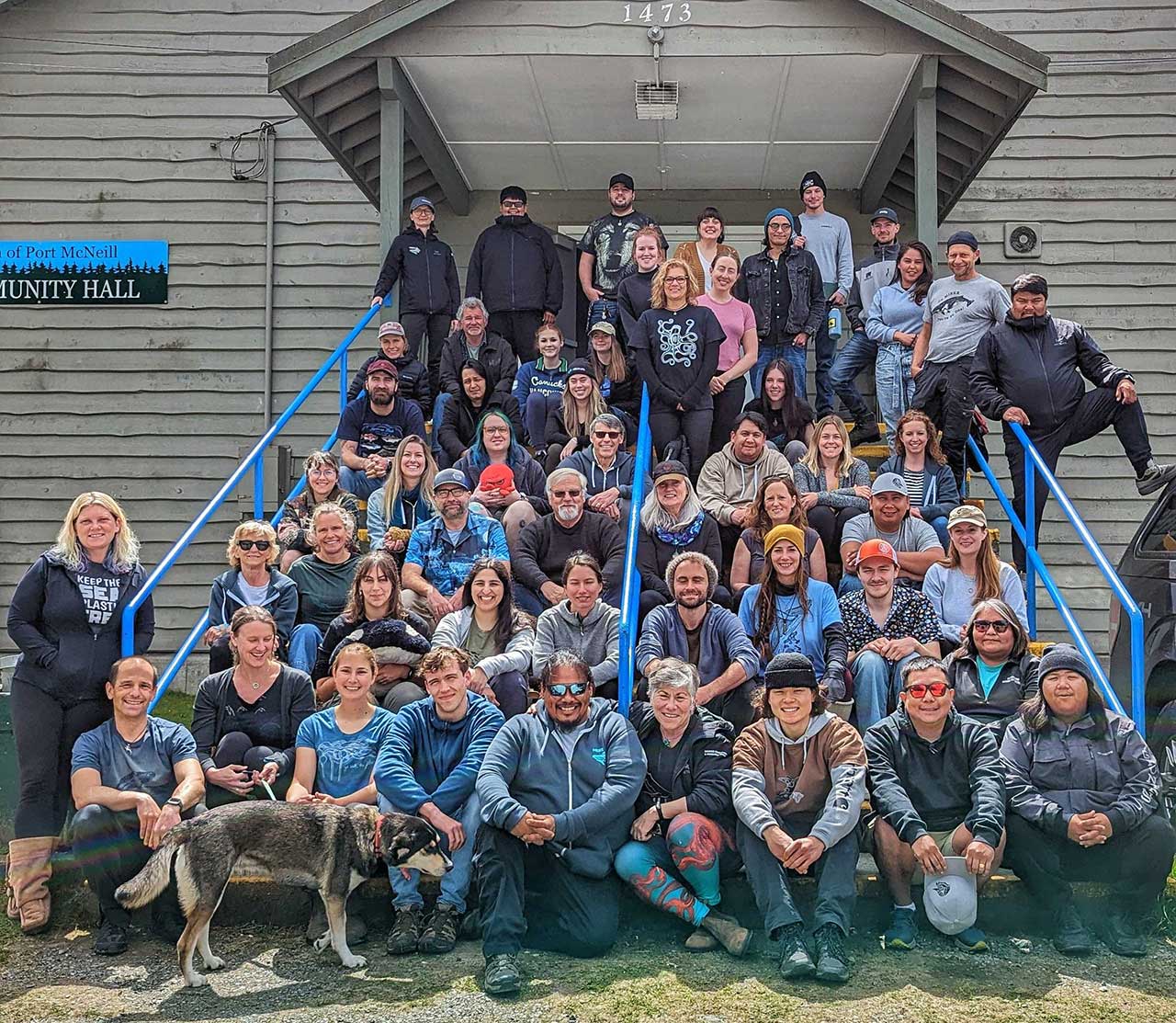
Marine Mammal Naturalist Course participants
